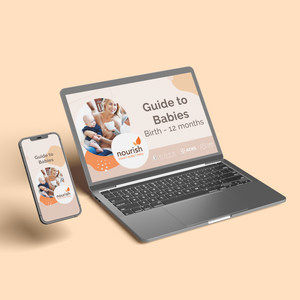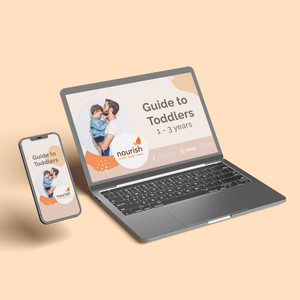Most people have heard of reflexology but not everyone knows what it is and the benefits it can bring.
Reflexology is a relaxing foot massage that works by stimulating the nerve endings in the feet, which correspond to organs and zones of the body. In this way reflexology treats the entire body and tones the system.
Reflexology for babies complements baby massage but is very different. Rather than setting time aside at home for a massage session, baby reflexology can be done any time anywhere; in the car, on a picnic, or waiting outside the school gates, as it only involves removing a bootee and can be done in minutes while Mum or Dad hold baby.
If you have ever been standing in the supermarket queue with a screaming toddler or have had sleepless nights when your little one just will not settle, then this is the answer!
Reflexology is suitable for babies from birth to 2 years old. Until the age of 3 years, children's feet generally are oval in form since the arches are not developed. Small feet are easy to treat. In order to carry out reflexology on your baby, cover the whole foot with tiny forward movements of the thumb; work up from the base of baby's heel to the point where the toes join the foot. Start with the right foot and massage this way across the foot to the outside edge, repeat on the left foot in the same manner; make sure you cover all the energy zones and on most of baby's body systems. Certain common ailments of newborns respond well to more concentrated work on one or more areas.
You can use reflexology as a natural healing therapy for acute illnesses as well as a preventative maintenance tool for good health, but as with anything if you are concerned about your child you should consult a doctor or other qualified health professional.
Traumatic Birth
A traumatic birth for baby could come from undergoing induced labour procedures, breeched positioned babies, being born by forceps delivery, or long intense labour. Help to offset the trauma to baby by massaging their feet for a minute or so each time. Concentrate on the spine, head and neck areas as described next.
Working the Head & Neck Areas
Support the top of baby's foot with your right hand, with left thumb; apply pressure to the general area beneath and over the toes. Repeat on left foot.
Working the Spine
Support right foot with left hand and massage the spine reflexes that are on the side or edge of baby's foot. Start massage on the side of foot, up to the top of the big toe. Again repeat on the opposite foot.
Colic Relief
In the first few weeks of birth, excessive crying after you know baby has been fed, burped, changed, and is not in any pain, could be due to colic. Colic is said to be caused by an underdeveloped digestive system. Babies that are premature with low birth weight or have experienced a traumatic birth can sometimes display symptoms of colic.
Reflexology Treatment for Colic
Treating the foot for about 5 minutes or so may relieve colic. Work from the base of foot to where the toes join with the foot, covering the pelvic and abdominal areas. Improving circulation in these parts helps with absorption in the digestive system and elimination of waste (bowel movement). You will know that your treatments are working if you hear a lot of rumbling and gurgling or bubbling in baby's stomach. This is normal. It is a sign of increased muscular activity in the stomach and bowel, which definitely reduces the pain of colic, caused by trapped air or wind in the lower bowel.
For breastfeeding mums, you can help colic while stimulating milk supply at the same time (complete two jobs in one) by drinking a strong infusion of chamomile tea with cinnamon, cardamom, or fennel blended together with a sweetener of choice (maple syrup or organic sugar).
Sip this down before breastfeeding and the traces of these herbs and spices known to aid in digestion will pass onto baby through the breast milk, therefore helping baby's digestion naturally.
If baby is over 3 months old chamomile tea can be given to babies who still suffer from colic in a bottle. The tea is very calming and soothing for digestion. Prepare tea, allow cool, adding mild sweetener if desired and giving to baby.
Working the Digestive System: Part 1
Support the right foot with your left hand, use right thumb to work over the entire heal area. Do this movement gently 2 or 3 times.
Working the Digestive System: Part 2
Apply gentle pressure across the middle area of foot, from the inside to the outside edge. Repeat both steps on the left foot. My friend used this with her baby for colic and it worked wonderfully but there really was a lot of gurgling and rumbling so don’t be alarmed about that, it means it’s working!
Teething Babies
Teeth coming in can cause some babies an extreme amount of stress followed by side effects such as fever, diarrhoea, sore gums etc.
Reflexology for Teething
Your goal with the treatment is to calm baby and reduce temperature. Gentle work on the whole foot should soothe baby. Massage both feet equally.
Daily mild reflexology treatments can ensure your baby's road to good health.
Tips for a relaxed reflexology session with your baby:
- Use a gentle pressure, as you would while massaging your baby.
- If a child is sick, reflex points will be quite sensitive.
- Work no longer than 5-10 minutes for the entire treatment, depending on what your baby will comfortably tolerate.
- If your baby pulls their foot away from you as you are working, it’s a good indication that it is not enjoyable and that you should stop and try another approach later.
About the Author:
Corinne, together with her partner Mary McClure are Precious Kids Great Parents – two mums with over 59 years combined child rearing experience. Between them they have 9 kids, 3 grand children, have had 4 caesareans, 1 miscarriage, 4 natural no drug births and a foster child! They also have over 60 years of work experience in the fields of medicine, education and counselling.
References:
Wiseone, R. (2008, October 21), Treat Common Baby Ailments with Reflexology Charlton, H. (n.d.). Baby Reflexology – The Key for Calming Baby
Our Products
-

01. Guide to a Healthy Pregnancy
$55 -

02. Positive Birthing Course
$55 -

03. Infant Feeding Guide
$55 -

04. Baby Sleep Guide - First 12 Months
$55 -

05. Toddler Parenting Course 1 - 3 Years
$55
-
 When to Start Antenatal Classes?
When to Start Antenatal Classes?
Becoming a parent is an incredible milestone, but it comes with a host of changes that can be daunting, especially for first time parents. Antenatal classes are all about offering expectant parents the education they need to make informed decisions, look after their bodies and care for their newborn babies. While you probably already have a long list of things you need to accomplish during your pregnancy, it’s a good idea to make time to attend antenatal classes.
-
 Development Milestones 4-8 Months
Development Milestones 4-8 Months
As they reach the middle of their first year, you'll start to see bigger leaps in their growth and ability!
In this article, we’re going to discuss your baby’s developmental milestones between 4-8 months, and what you can expect along the way.





 When to Start Antenatal Classes?
When to Start Antenatal Classes?
 Development Milestones 4-8 Months
Development Milestones 4-8 Months








